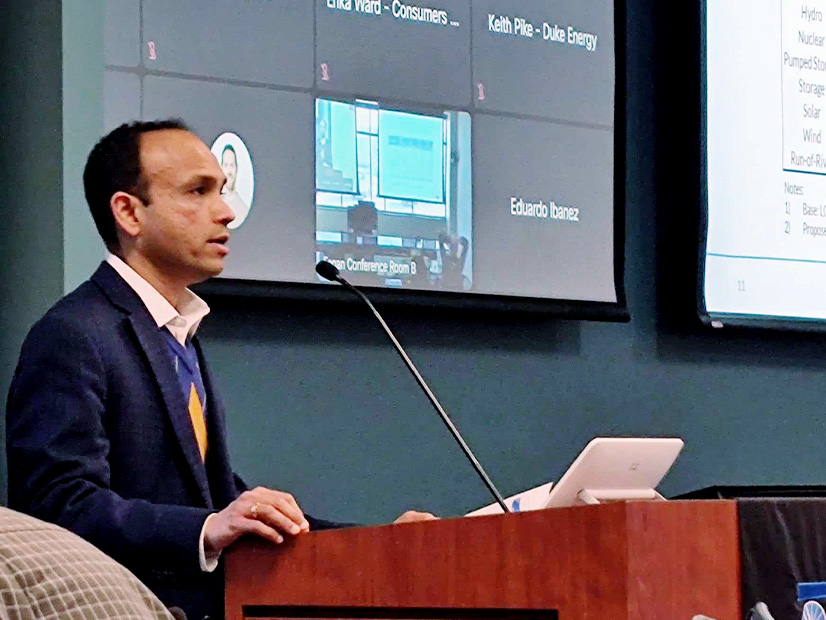CARMEL, Ind. — MISO said with resource adequacy risks at its doorstep, it may need to place tougher requirements on its load-modifying resources and devise new, nonemergency means of using the load offsets that cannot meet new performance standards.
During a May 22 Resource Adequacy Subcommittee, MISO’s Neil Shah said he expects the grid operator will use LMRs differently from how they’ve been used in the past to aid reliable grid operations. He said the RTO plans to “redefine the LMR product” and “remap” its load management that can’t meet qualifications into potentially new resource modes that can be used during nonemergency conditions. The LMR category going forward might contain only those resources that can be ready within 30 minutes, staff suggested.
Shah said MISO still plans to draw on “all types of resources both on the demand side and the supply side.” He said reserves that cannot meet new LMR standards will still be used to aid reliability in its markets, albeit differently.
“We see the grid is transforming at a rapid pace. We see the risk patten changing,” Shah said, adding that the LMR construct must change with it.
Shah said that since 2007, LMRs have been used strictly during emergency conditions. LMRs are out-of-market voluntary response resources, Shah said, which are “guaranteed capacity market payment regardless of actual performance.” He said when MISO begins issuing capacity advisories and emergency alerts, LMRs sometimes will self-schedule reductions, and because MISO isn’t aware of the load offsets until after they occur, it complicates the ability to estimate needs before peak hours.
Shah said MISO plans to present its new approach to LMRs at its Resource Adequacy Subcommittee’s July meeting.
Sustainable FERC Project’s Natalie McIntire asked that MISO find ways to “maximize” the resources that might not be able to make the LMR cut.
Michigan Public Power Agency’s Tom Weeks said it might be simpler for MISO to remove the requirement that it be in an emergency before LMRs can be accessed. He also said he wished MISO would “weed out bad actor” LMRs that don’t provide load reductions as promised.
“Instead of using a scalpel to correct the issue, MISO is pulling out a bone saw and doing Civil War-like medicine to cut off a limb,” Weeks said.
Shah acknowledged MISO needs better-defined auditing and monitoring standards for its LMRs. He repeated that MISO is open to creating a new market product to make sure participants can make use of longer-lead demand response offerings. However, MISO’s Zak Joundi later said MISO prefers to route nonemergency LMRs into one of its existing participation categories.
Shah said MISO can examine its current Demand Response Resource Type I participation model to make sure it’s still useful to participants. If not, the RTO can make tweaks, he said.
“It’s MISO’s job to make sure that it can make use of the resources available to it,” WPPI Energy’s Steve Leovy said. He argued that MISO shouldn’t need strictly 30-minute LMRs and that it should activate emergencies a few hours beforehand when it requires demand response. MISO should expect some level of inefficiencies during emergencies, he said.
“We’re talking a few times a year during severe conditions … to keep the system intact,” Leovy said.
“Managing a 15-state footprint is incredibly complicated. When you get into real-time emergency conditions, more simplicity is needed in the design,” Executive Director of Market Operations JT Smith said.
Smith said the problem of when LMRs could deliver wasn’t present 10 years ago because MISO had ample resources. Now, he said MISO’s “entire reserve fleet is sitting behind an emergency call.”
MISO initially was slated to use summer to design a new capacity accreditation for its LMRs; however, it said it was persuaded by stakeholders to pause on remodeling accreditation in favor of redrafting the LMR rulebook.
LMRs were not included in MISO’s recent filing to implement a new capacity accreditation that would accredit resources based on their projected availability and historical performance during periods of high system risk. (See Stakeholders Deliver Negative Reactions to Proposed MISO Capacity Accreditation at FERC.)
Before it announced the pivot, MISO said it considered splitting LMRs into emergency and nonemergency resources, giving 100% capacity credit to more nimble, emergency LMRs and apply a sliding scale to nonemergency LMRs that would reduce capacity credits as response times rise.

